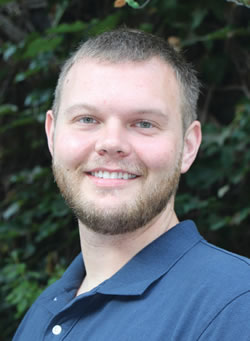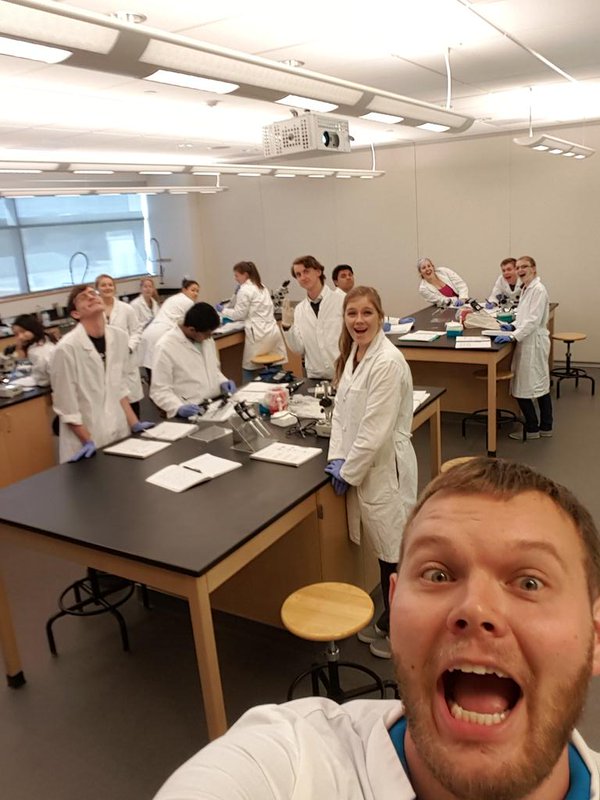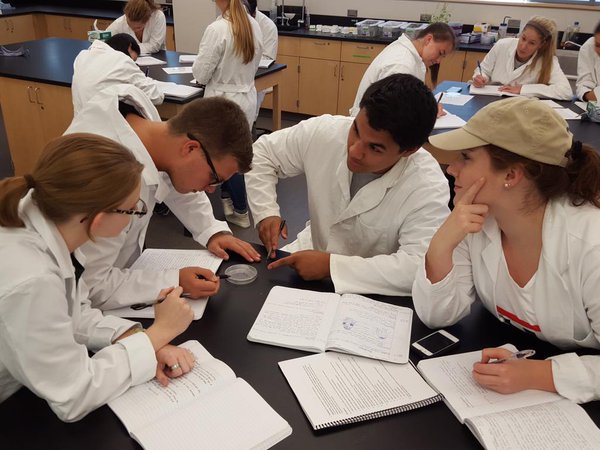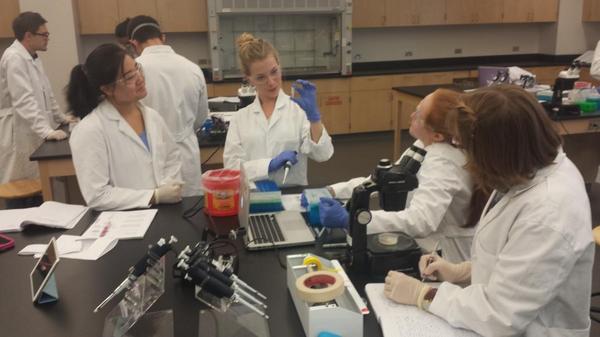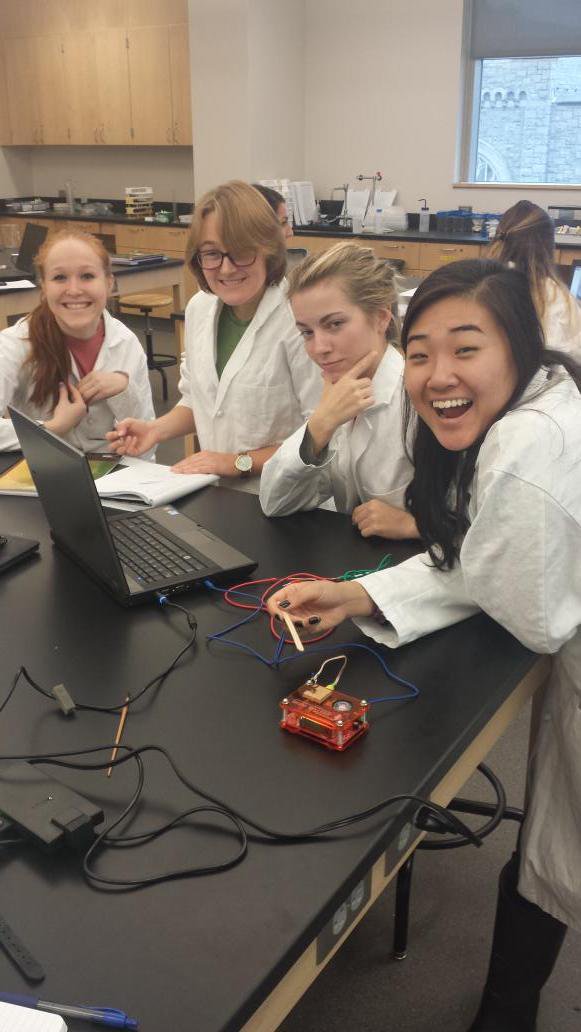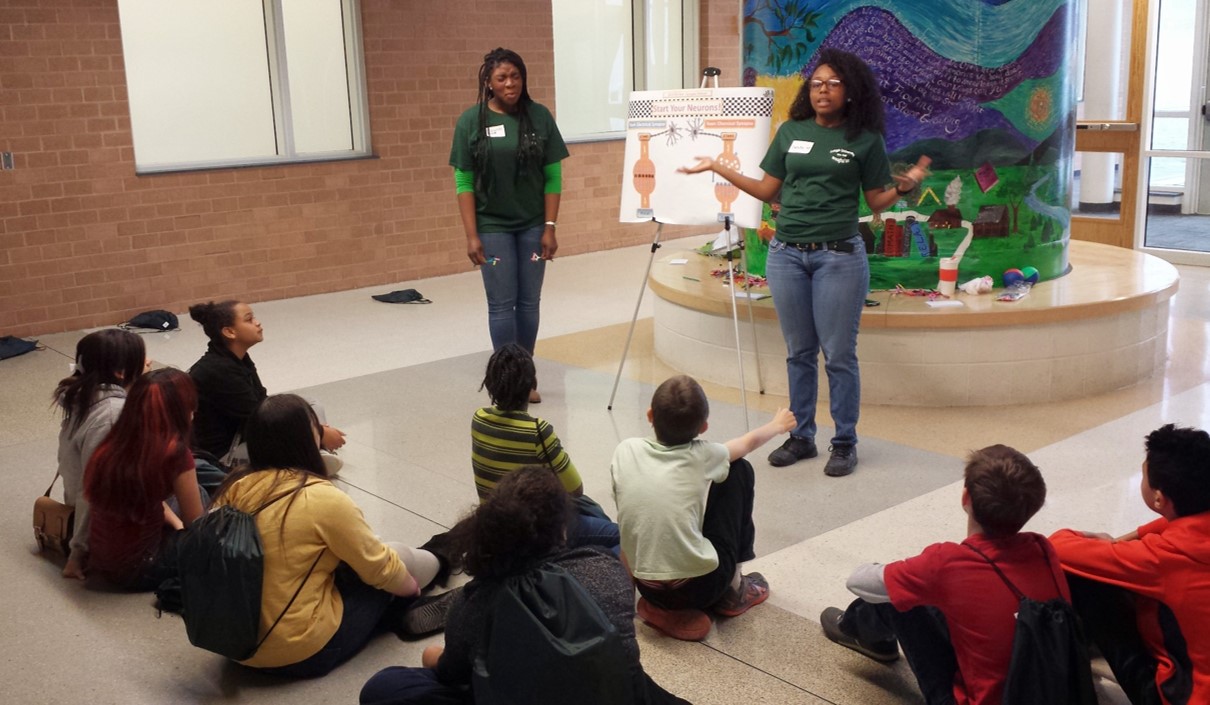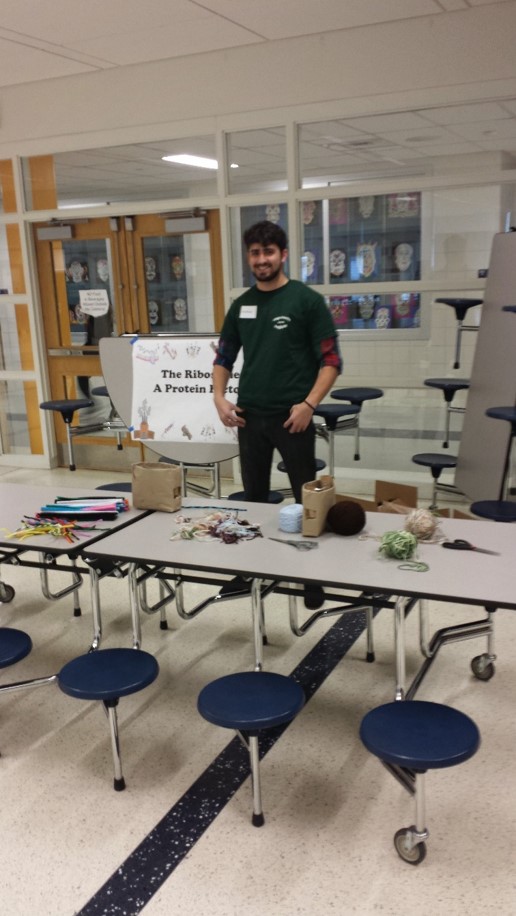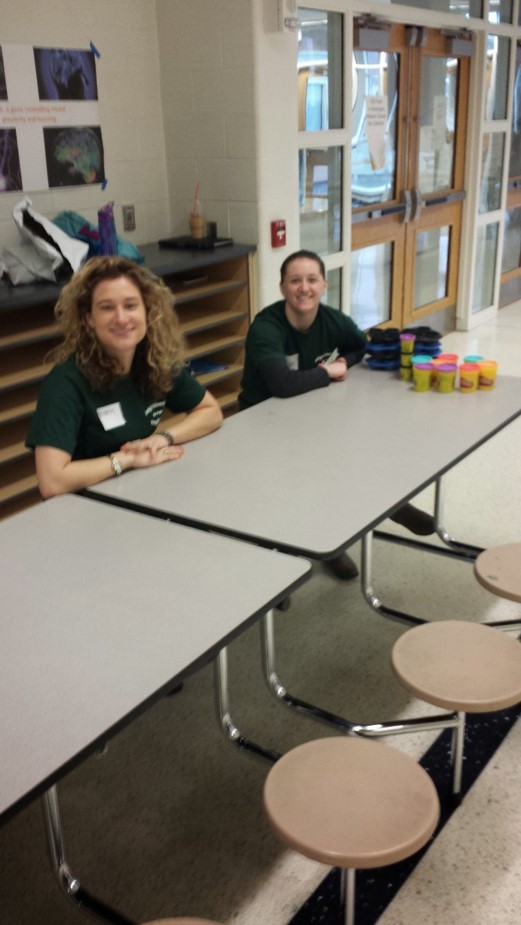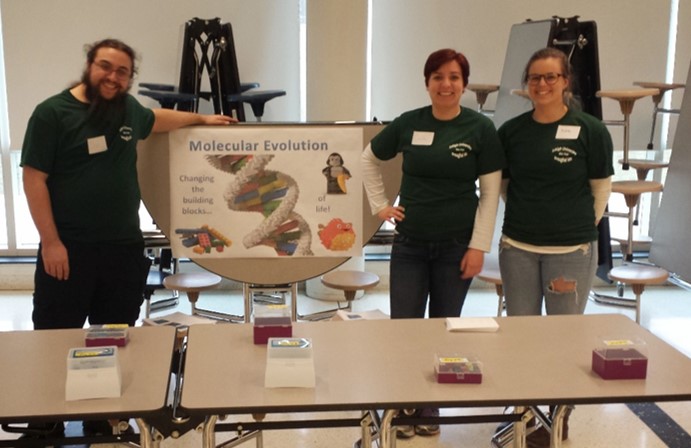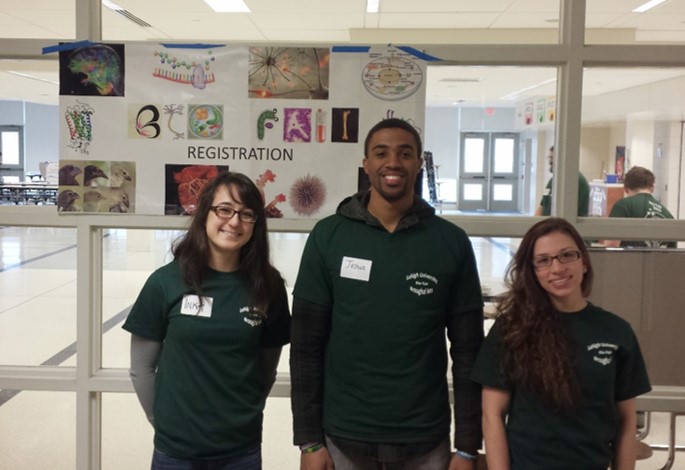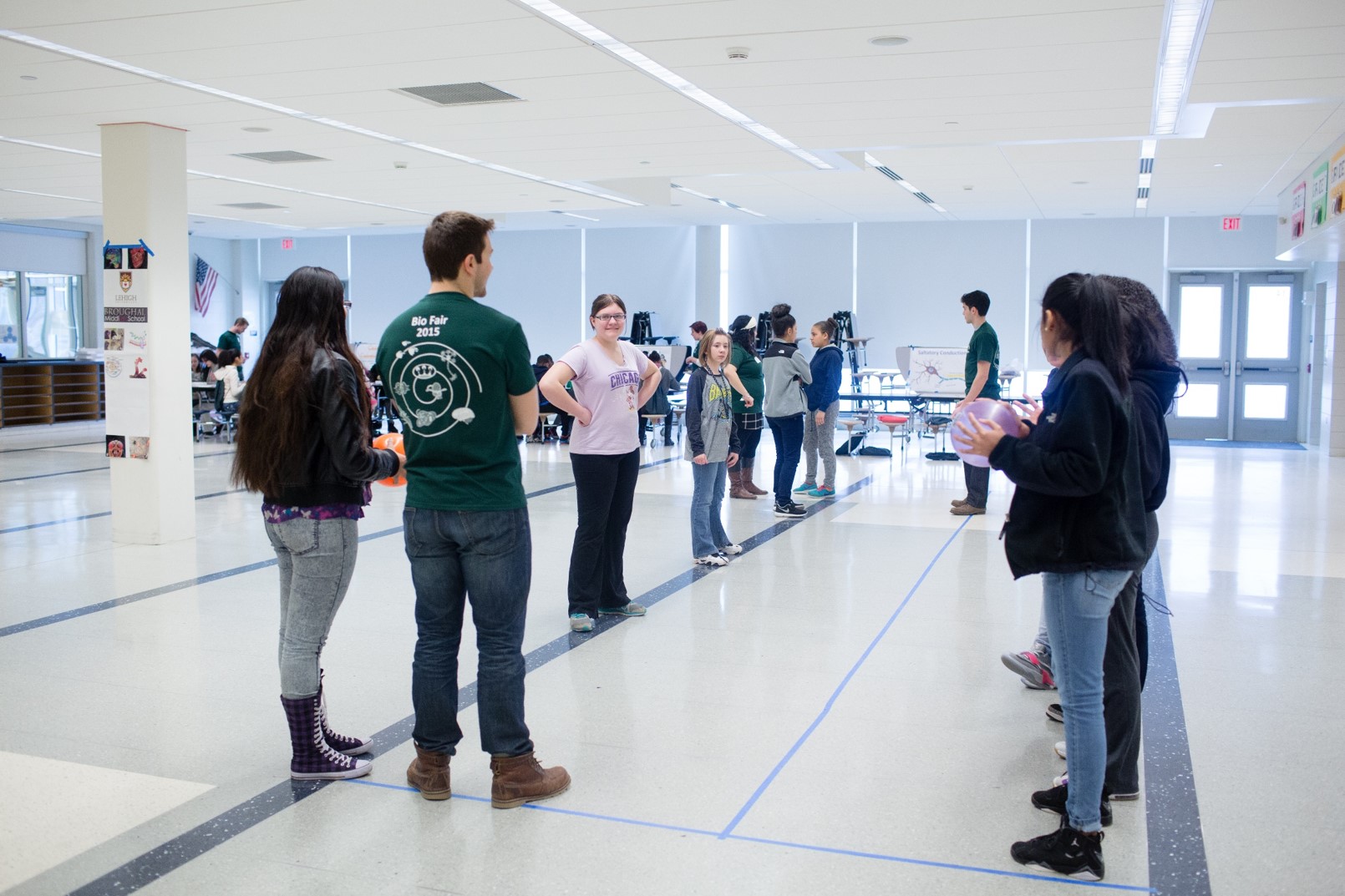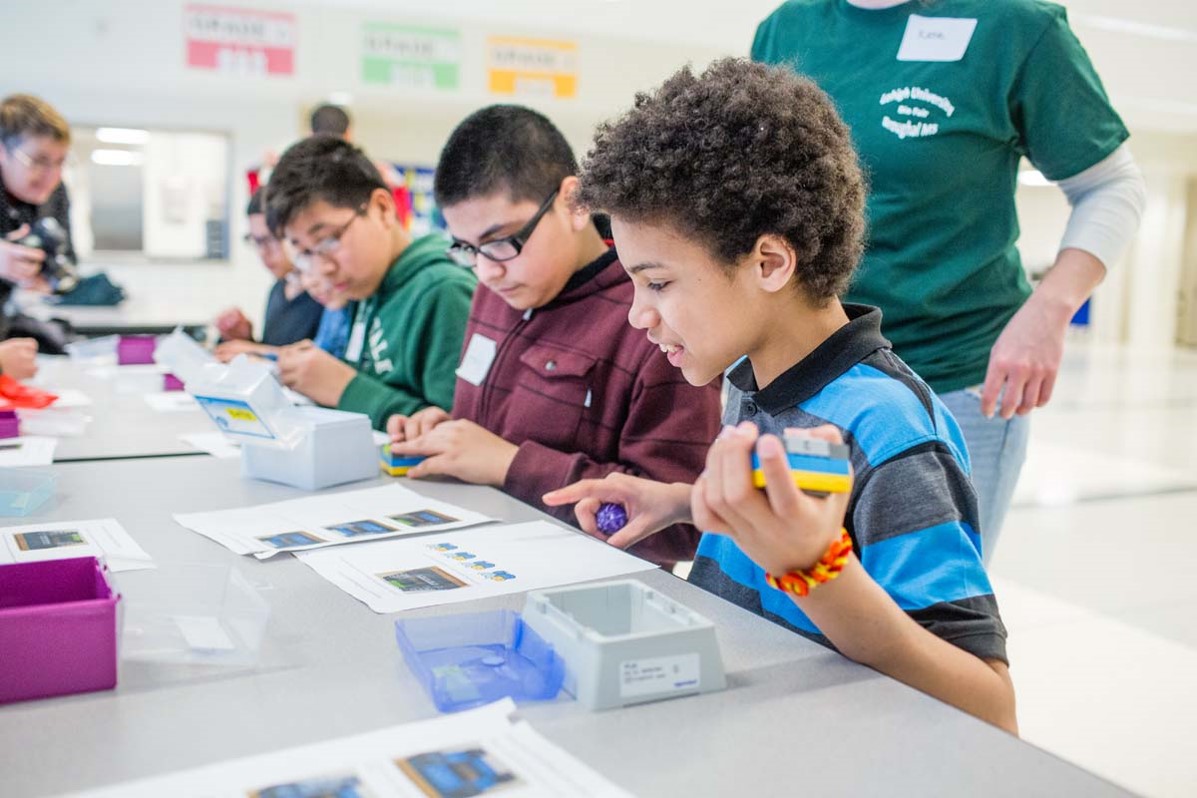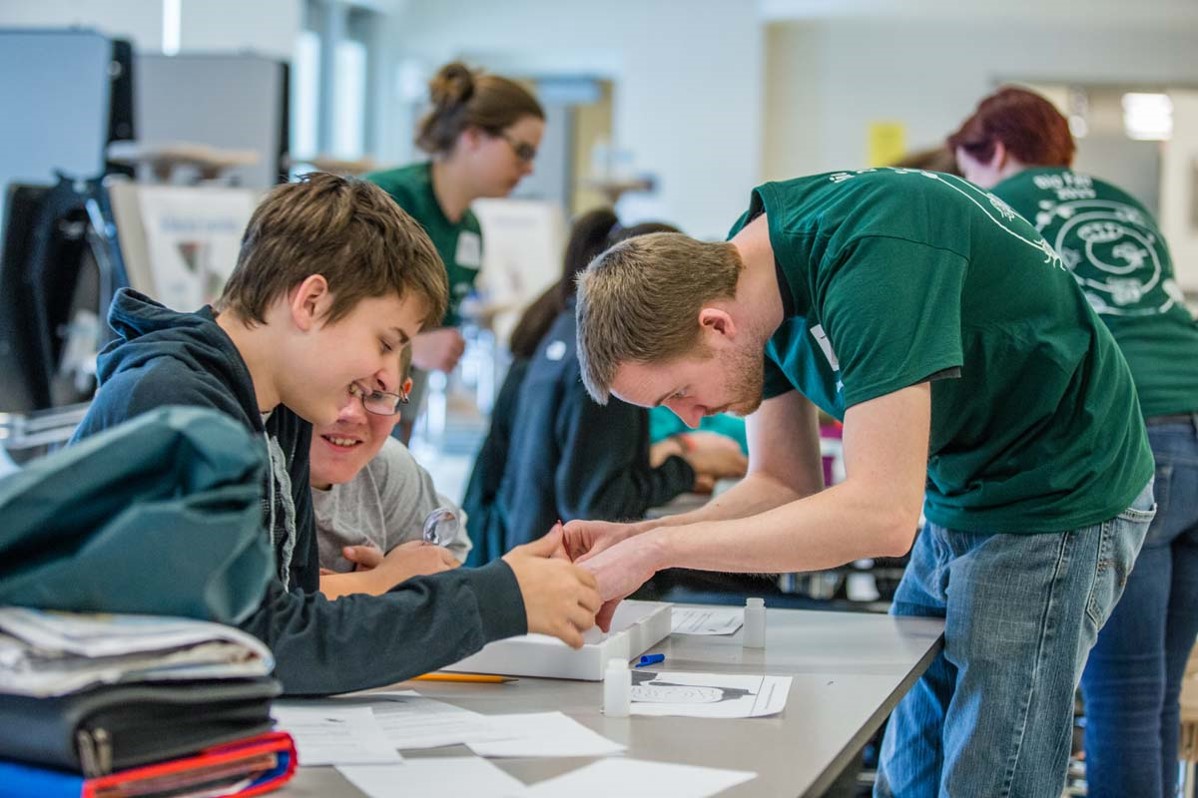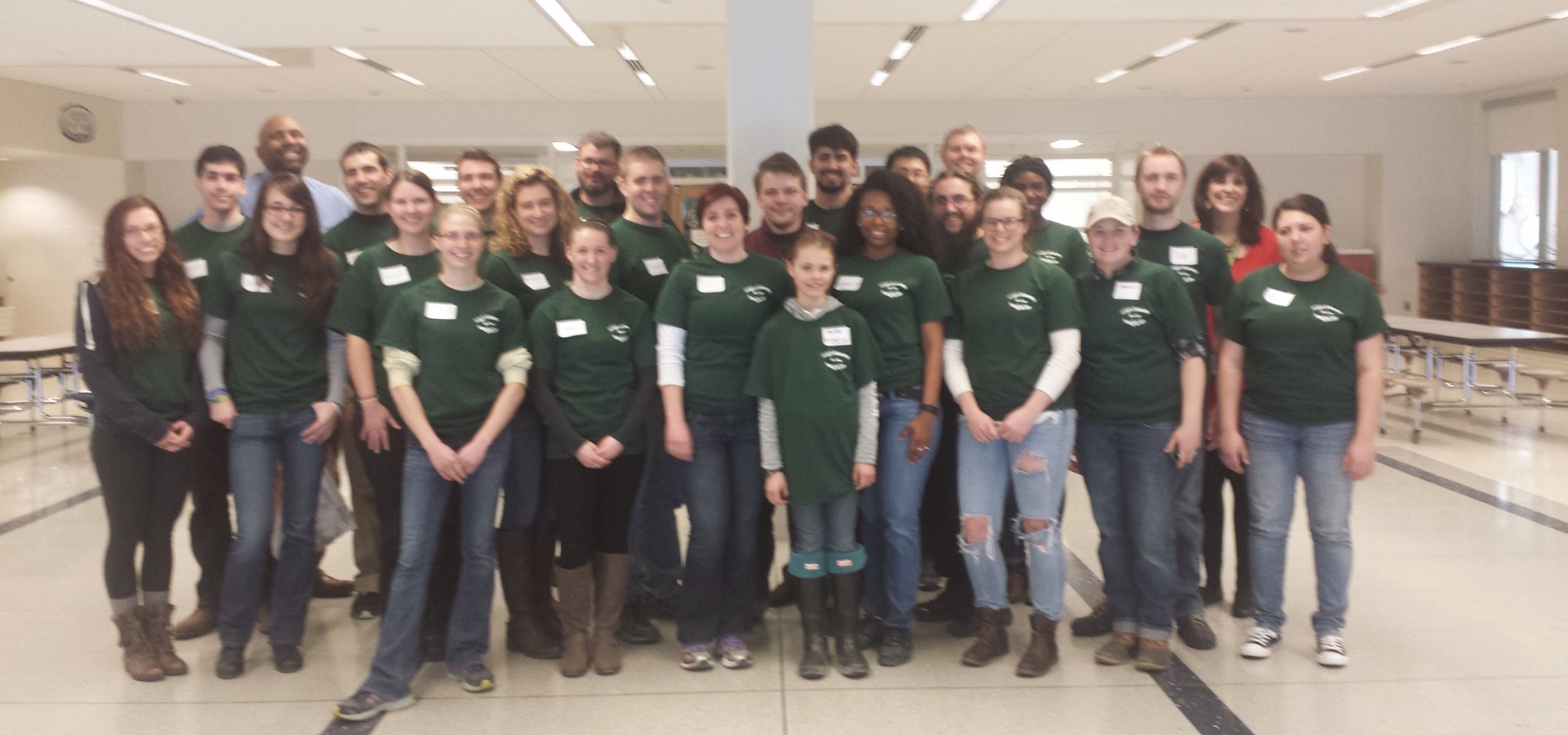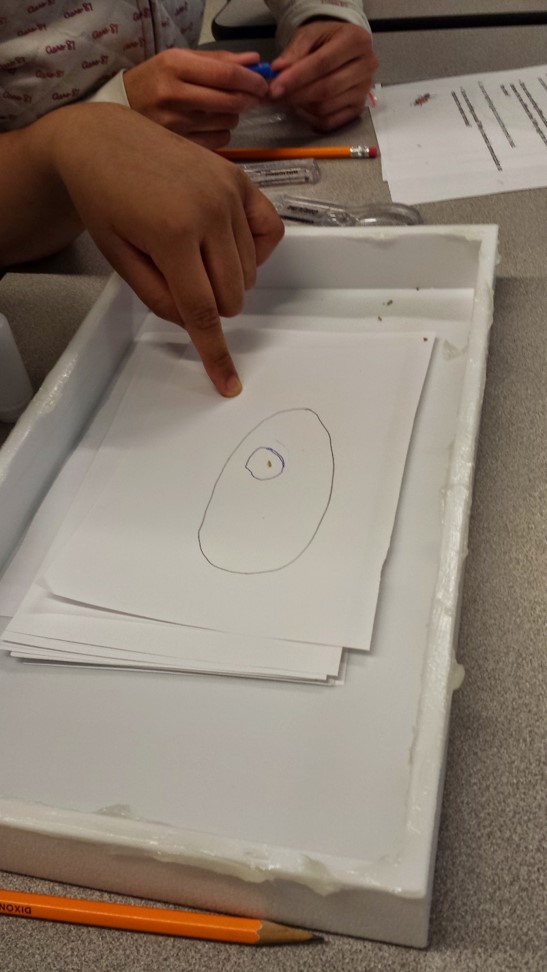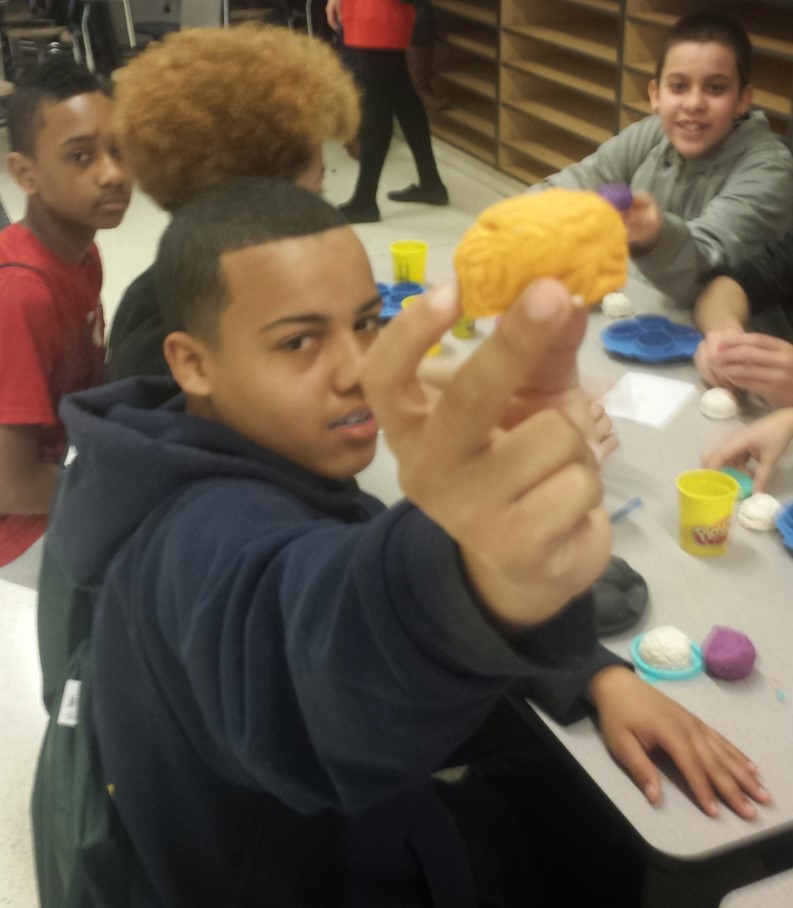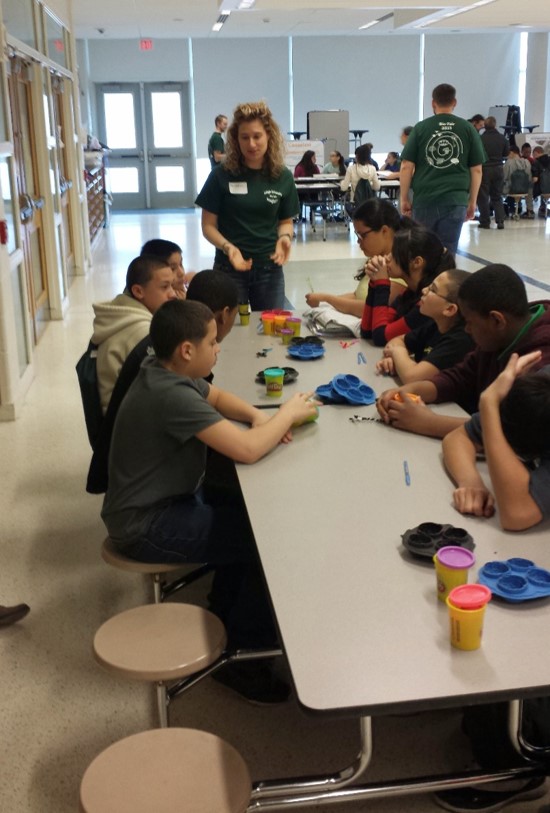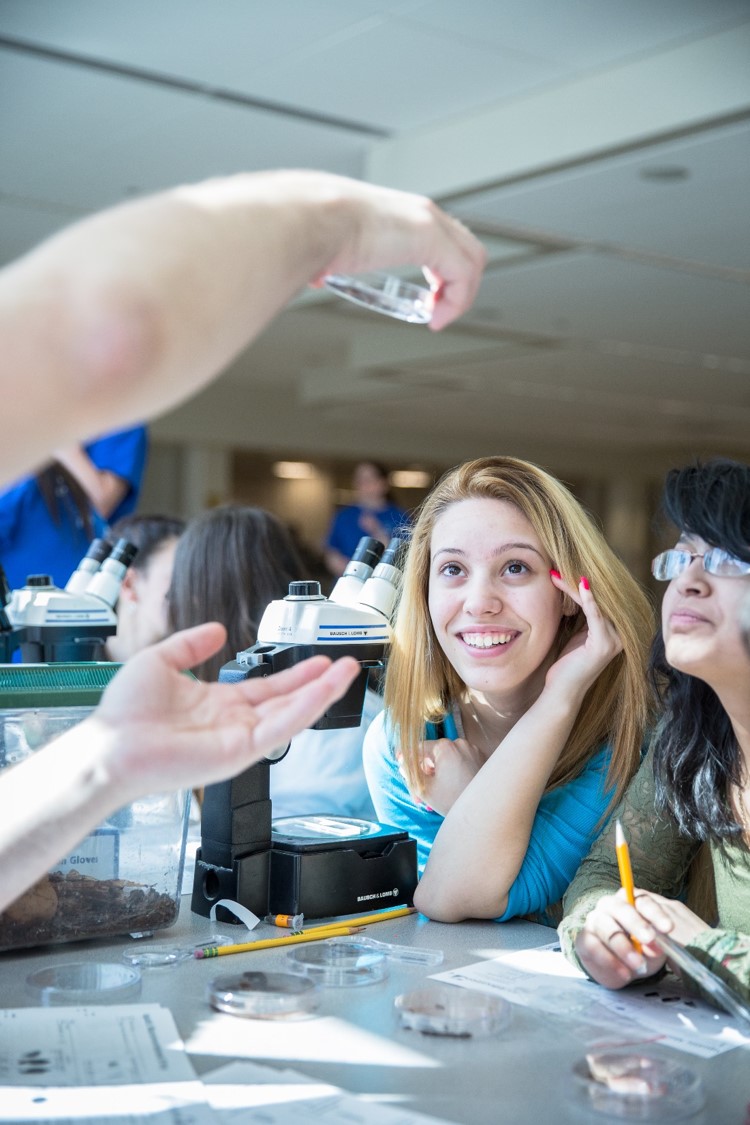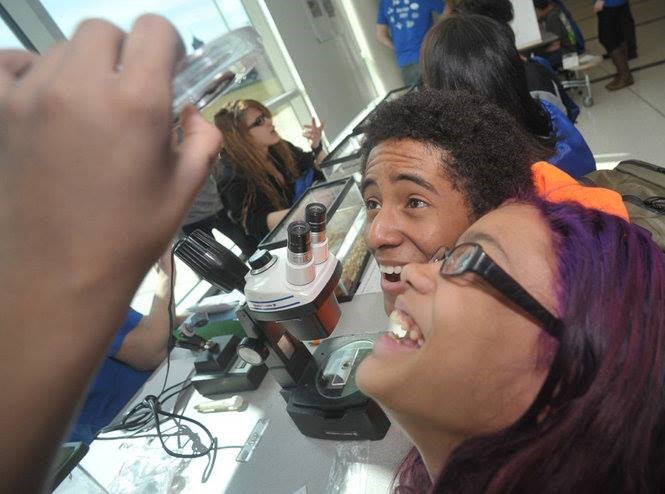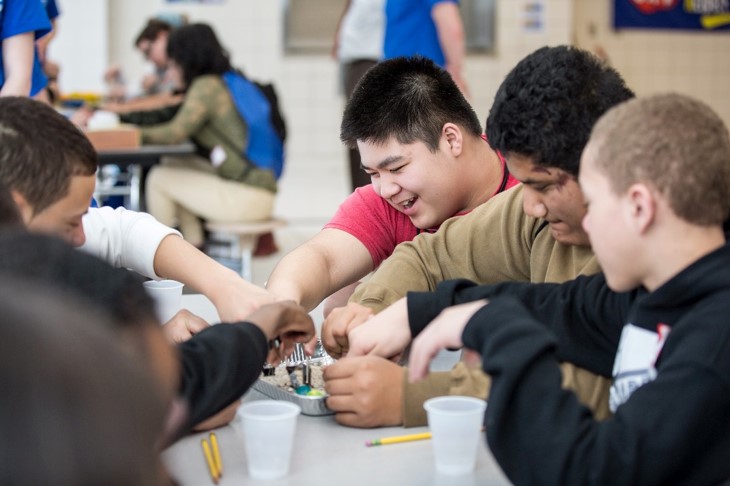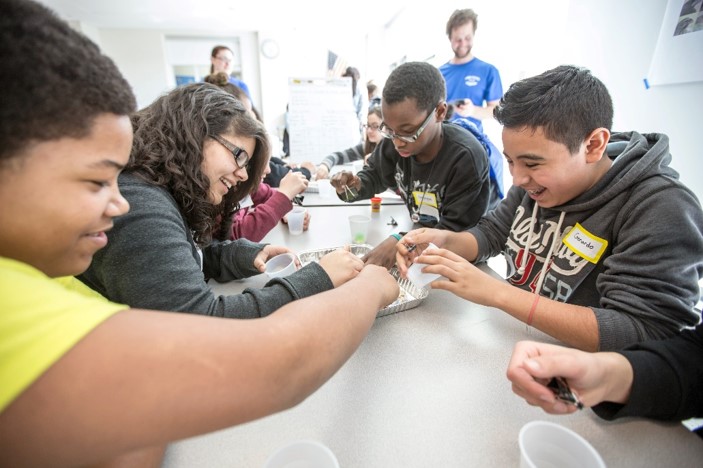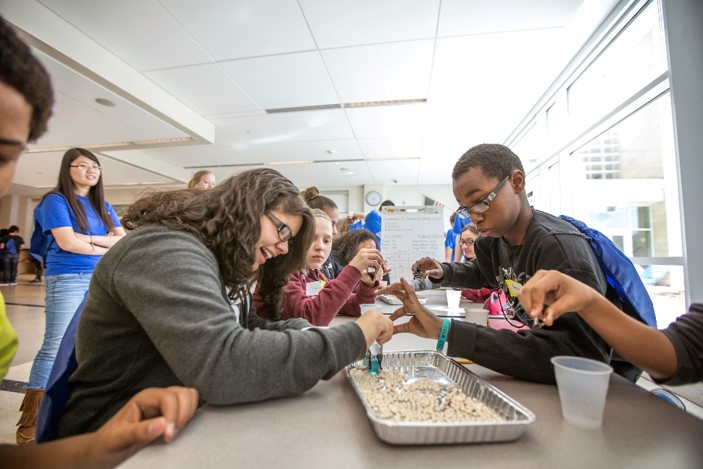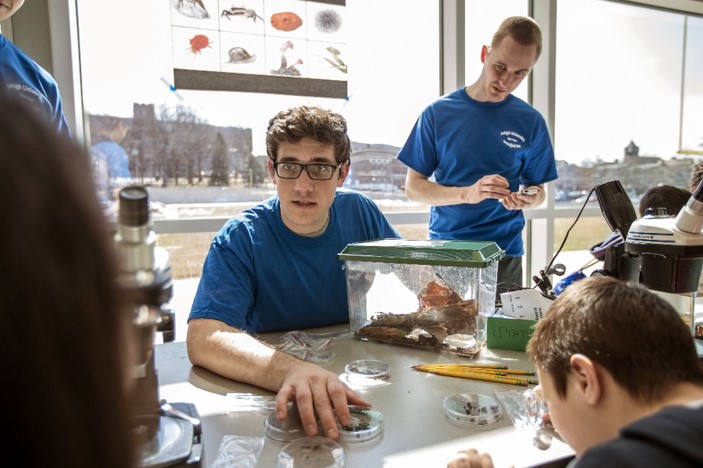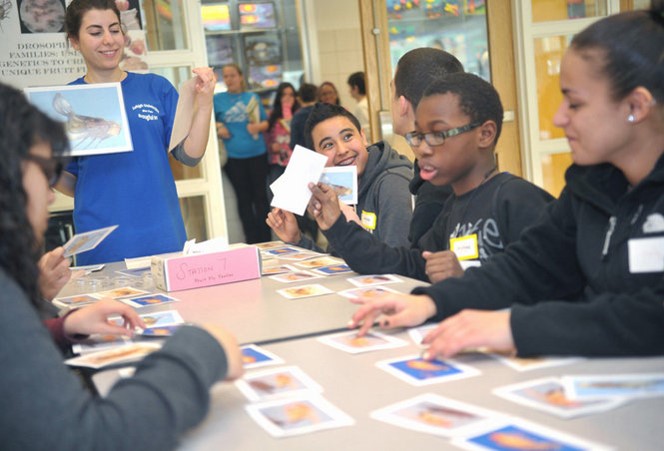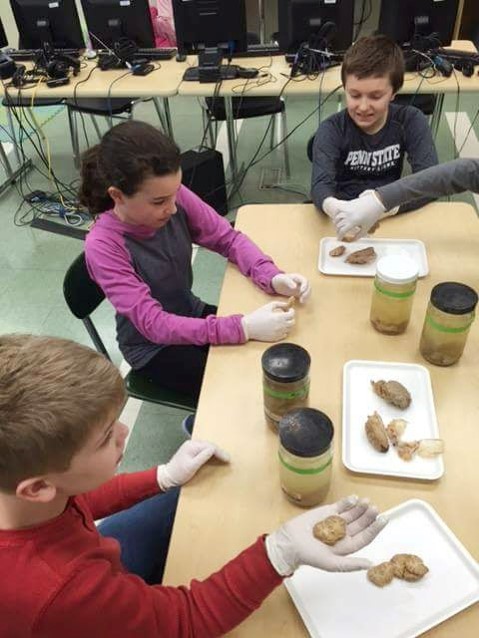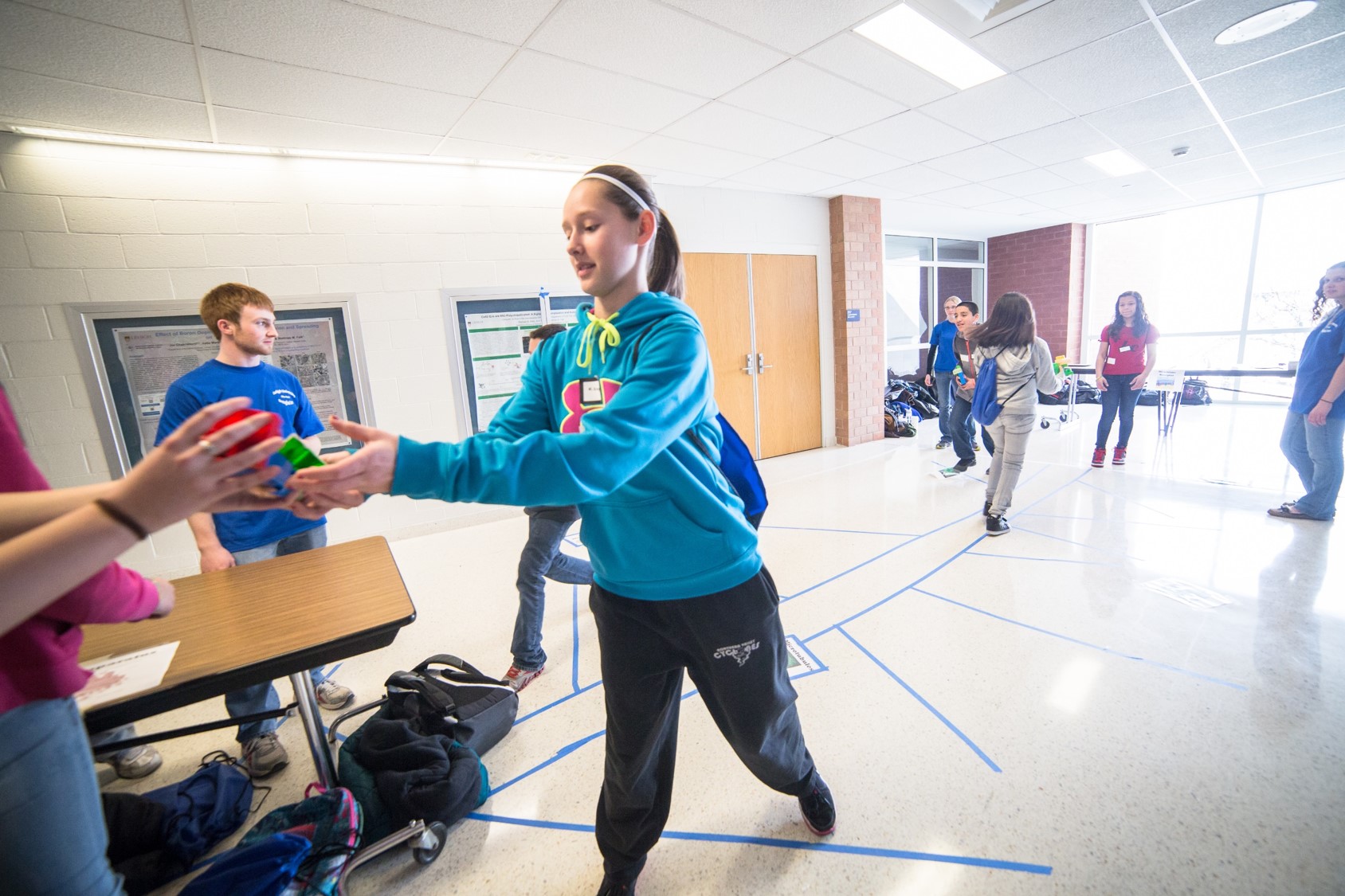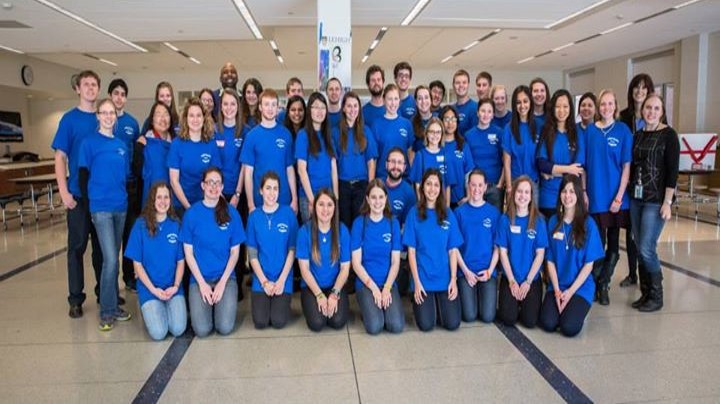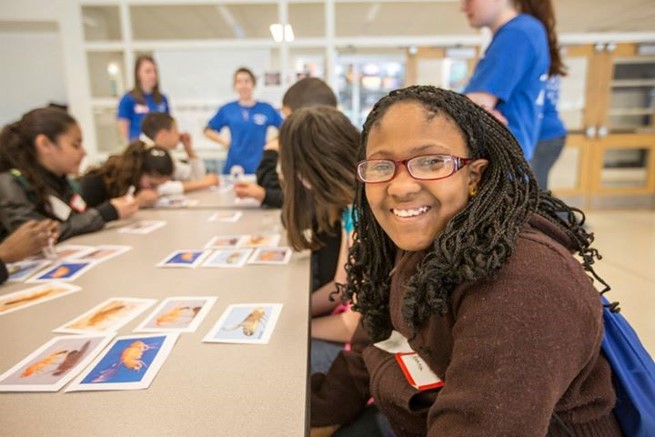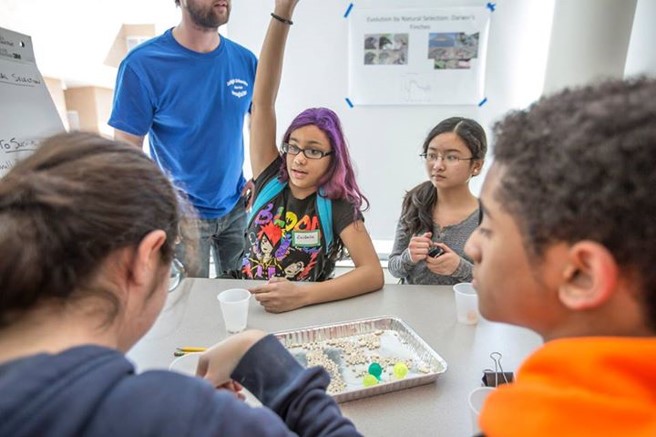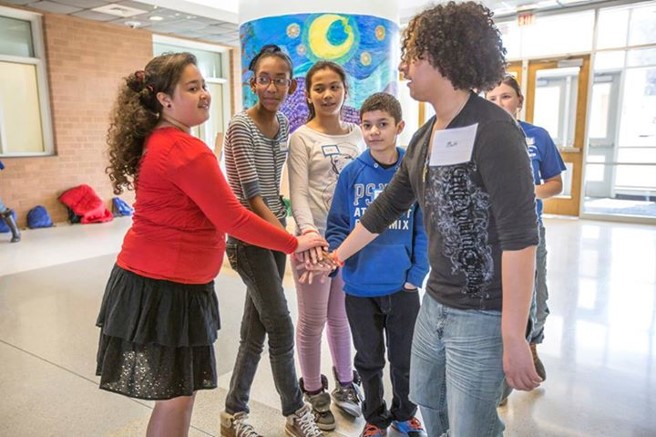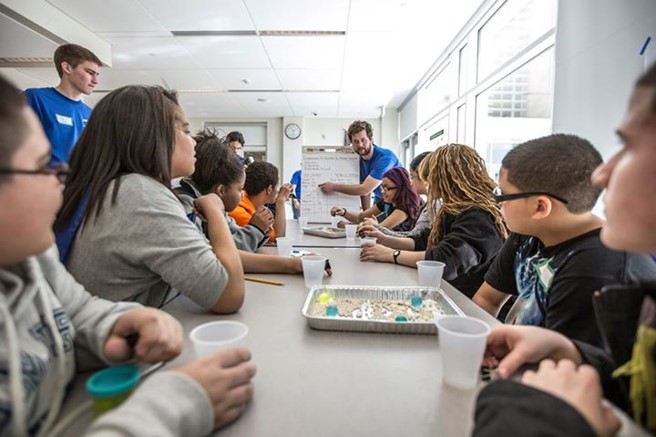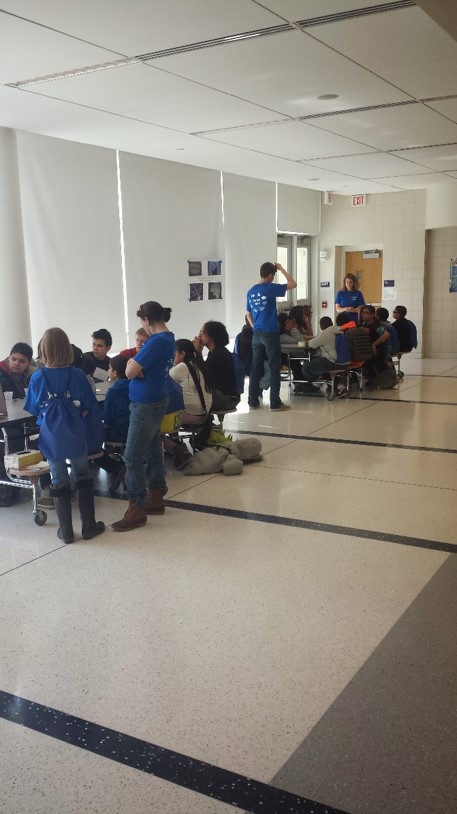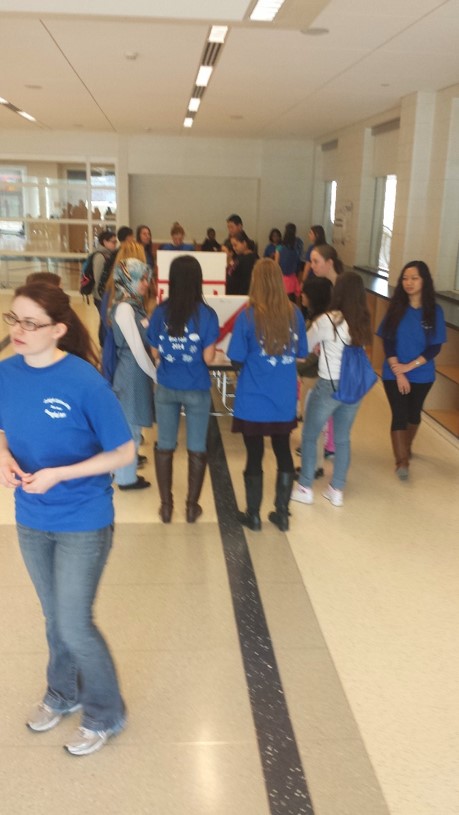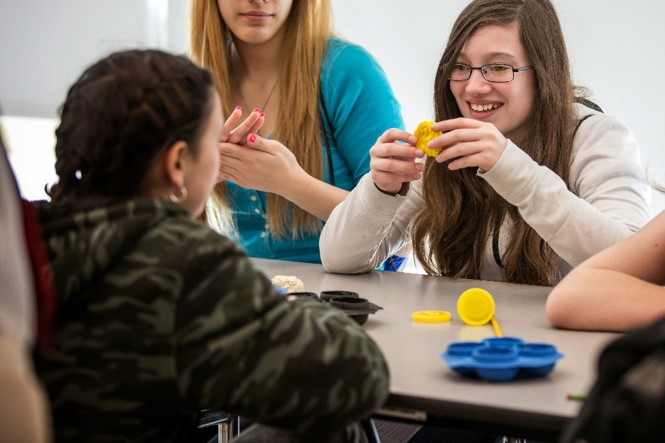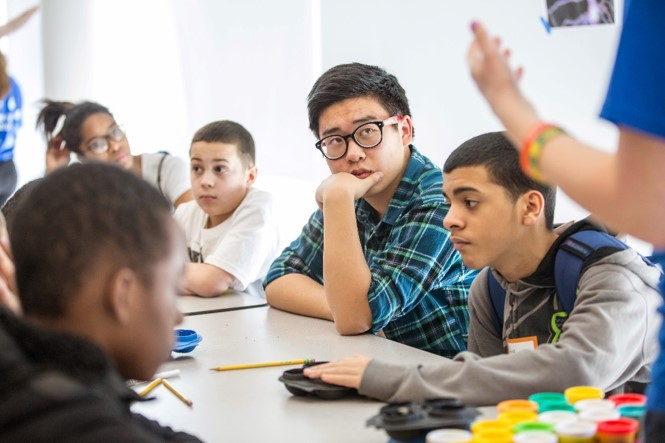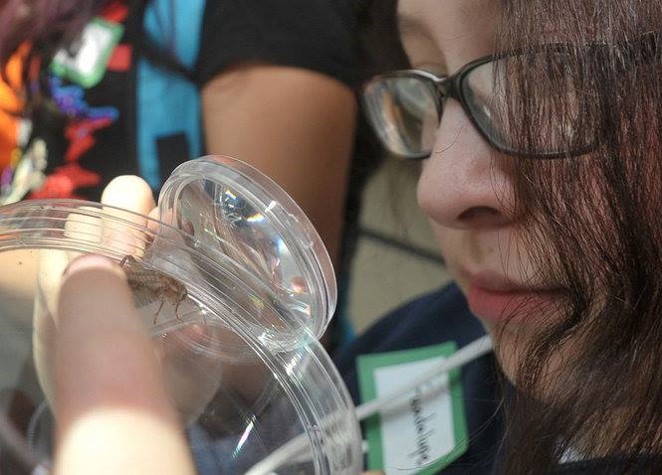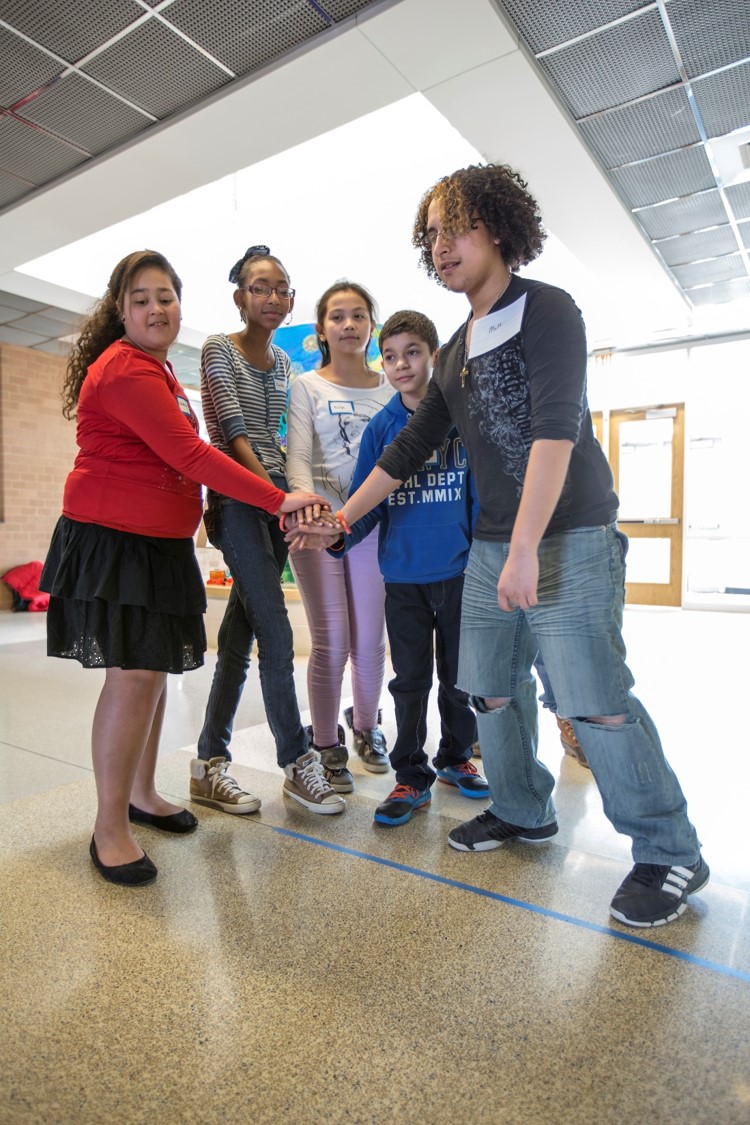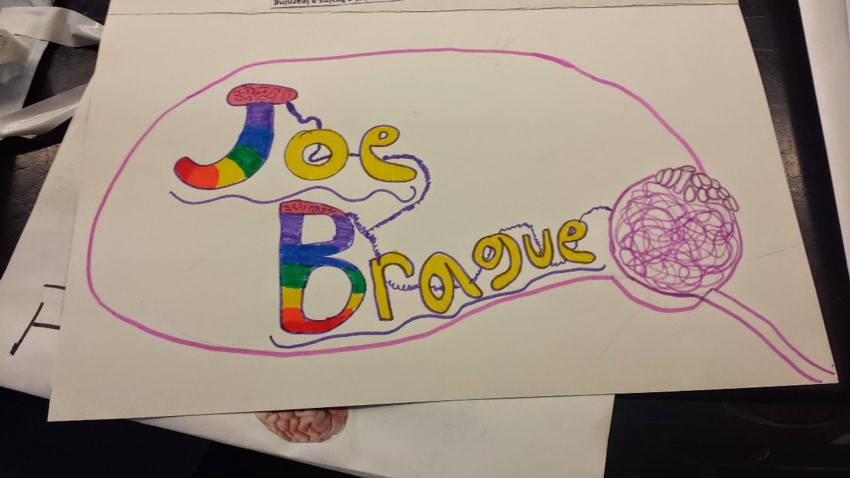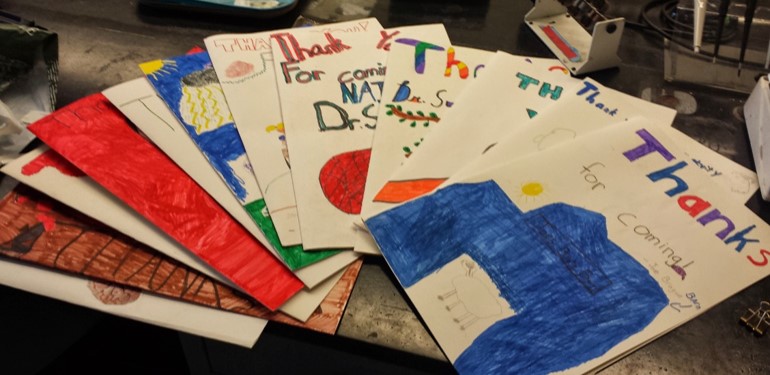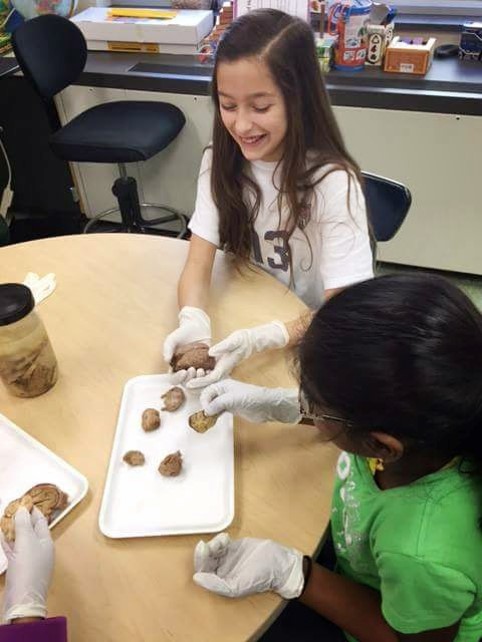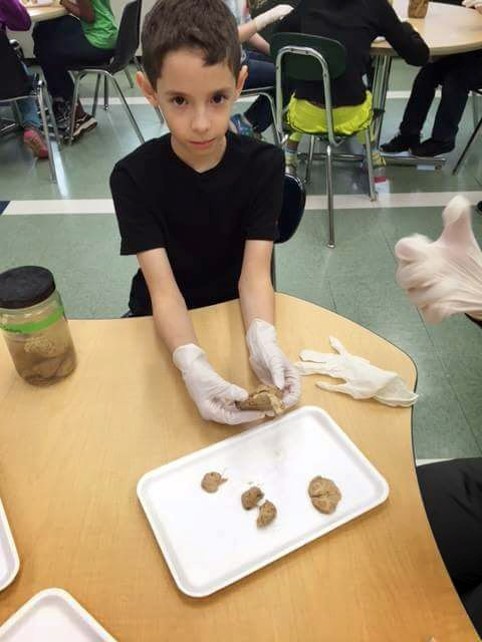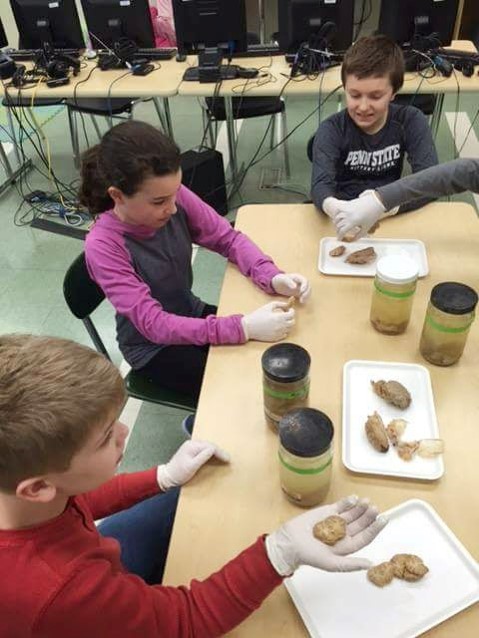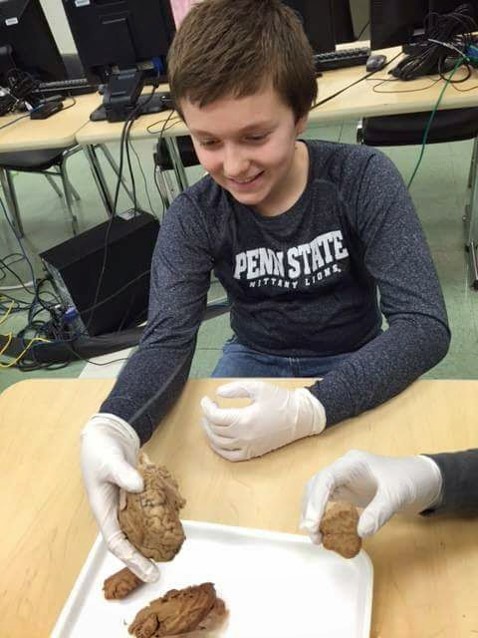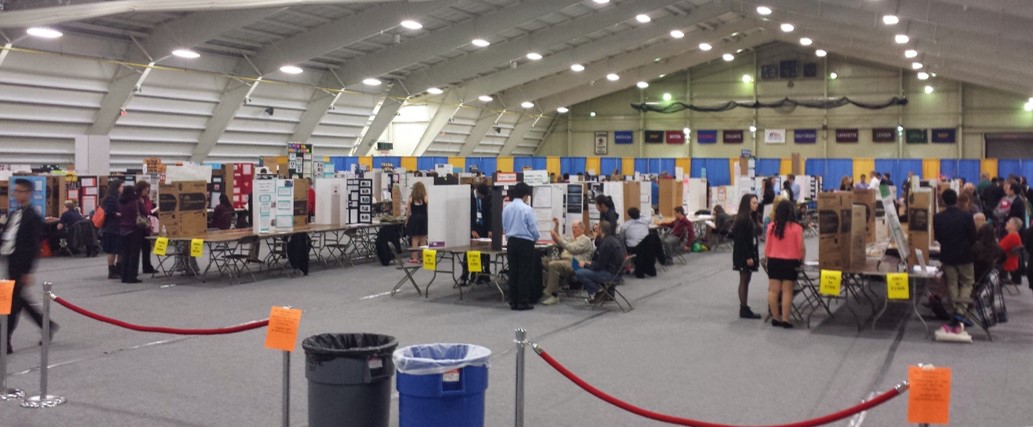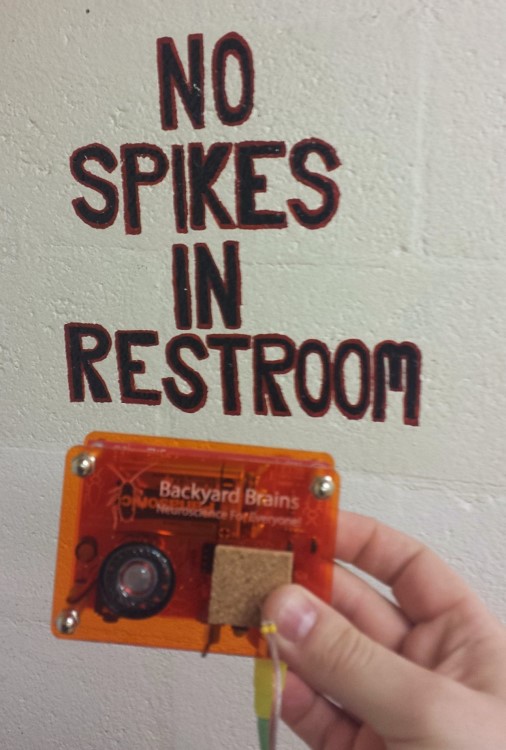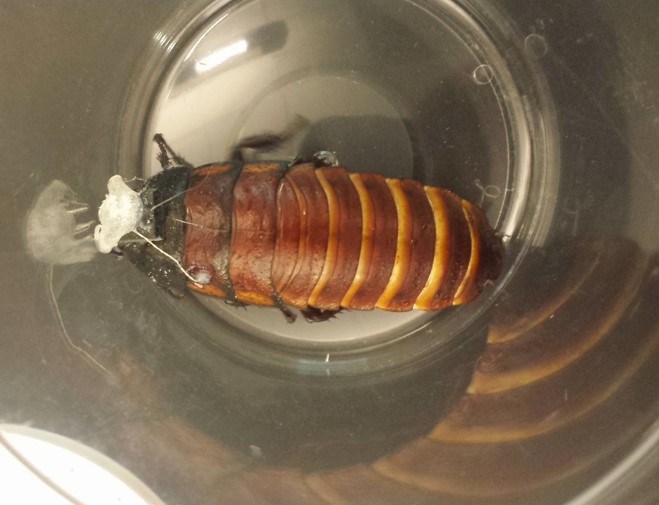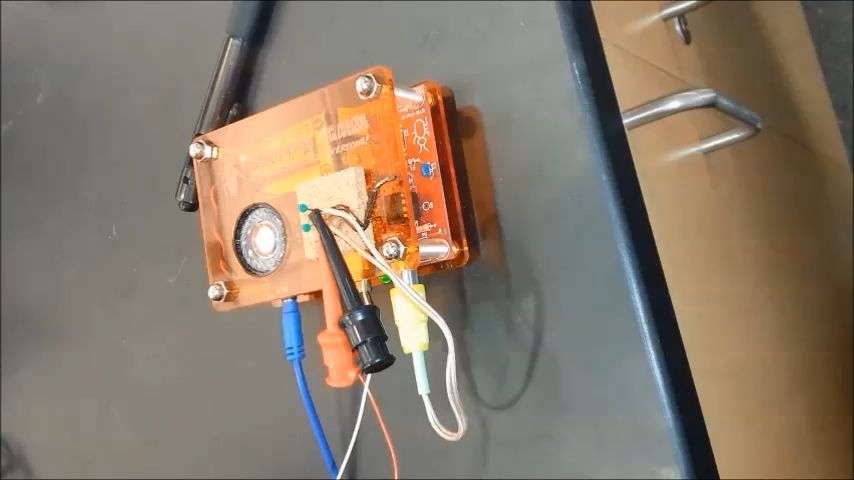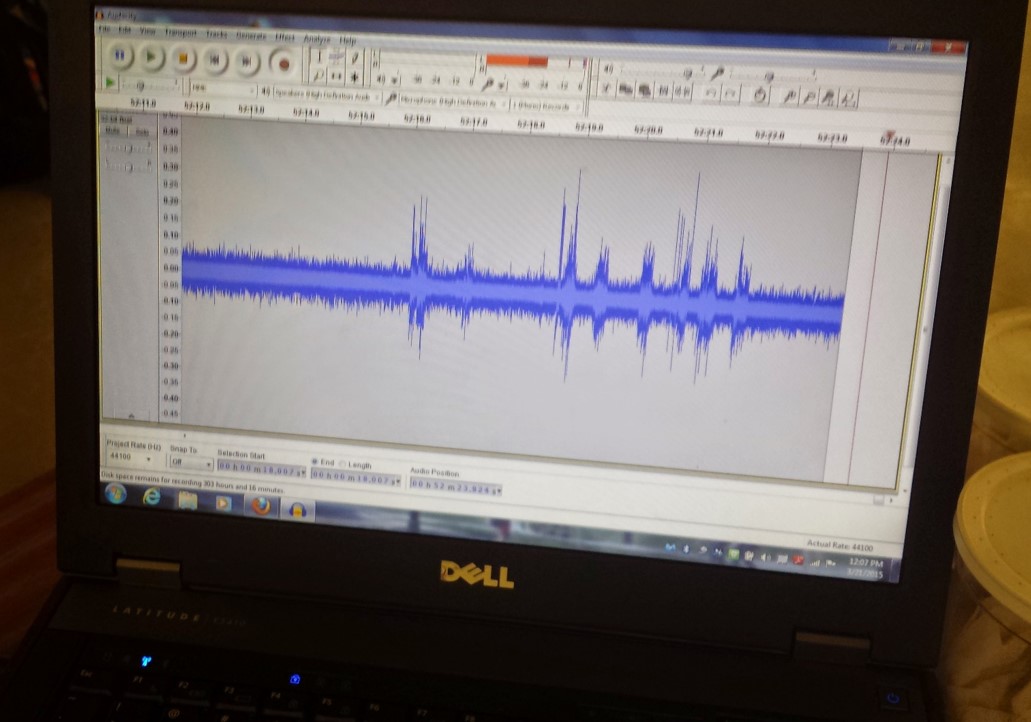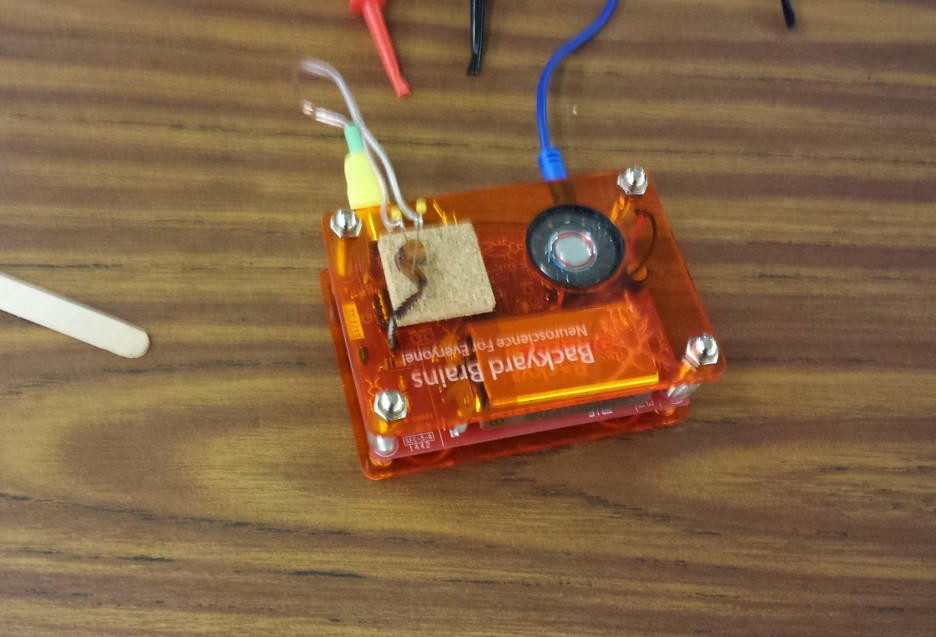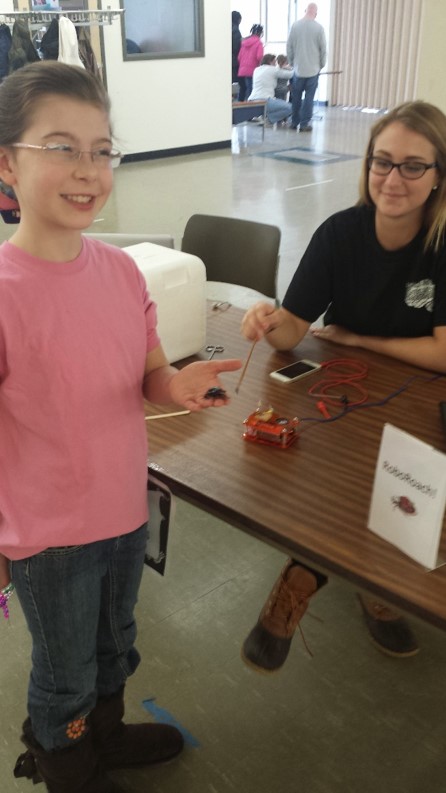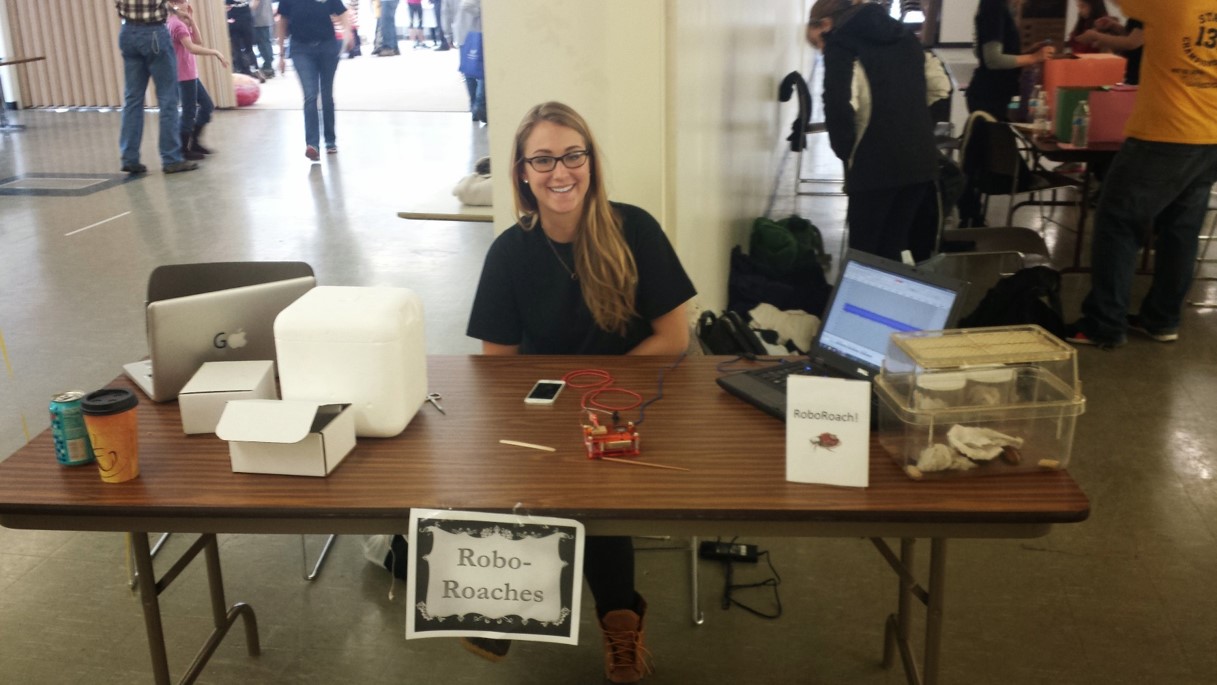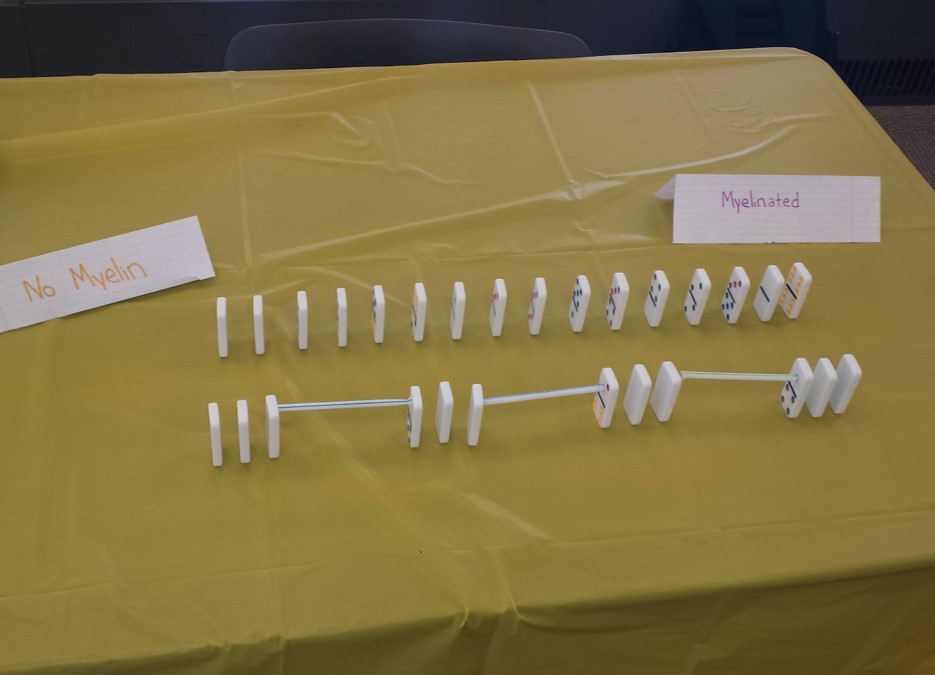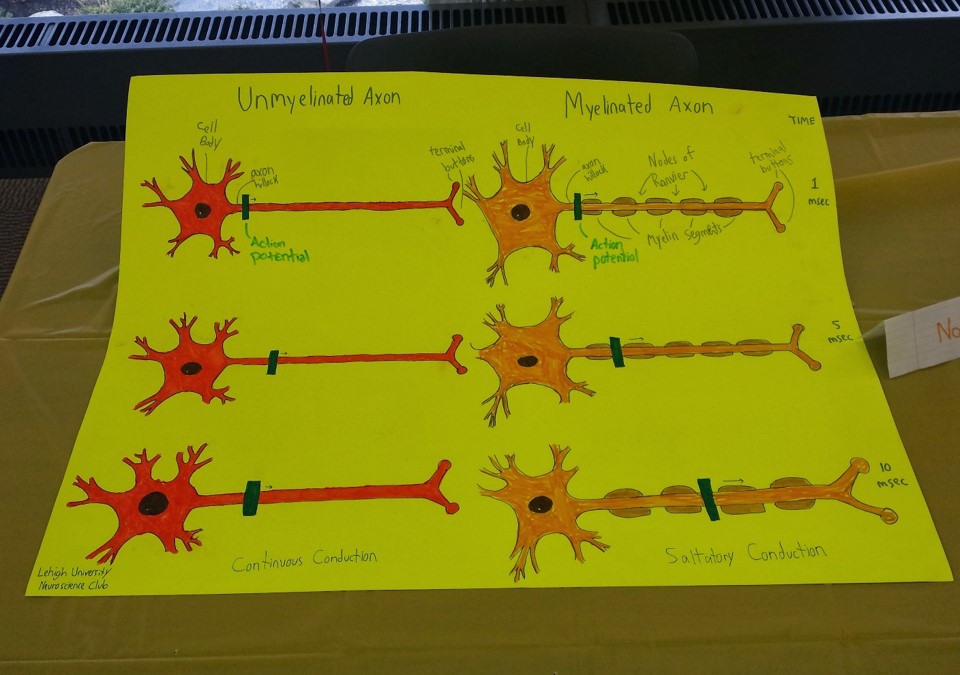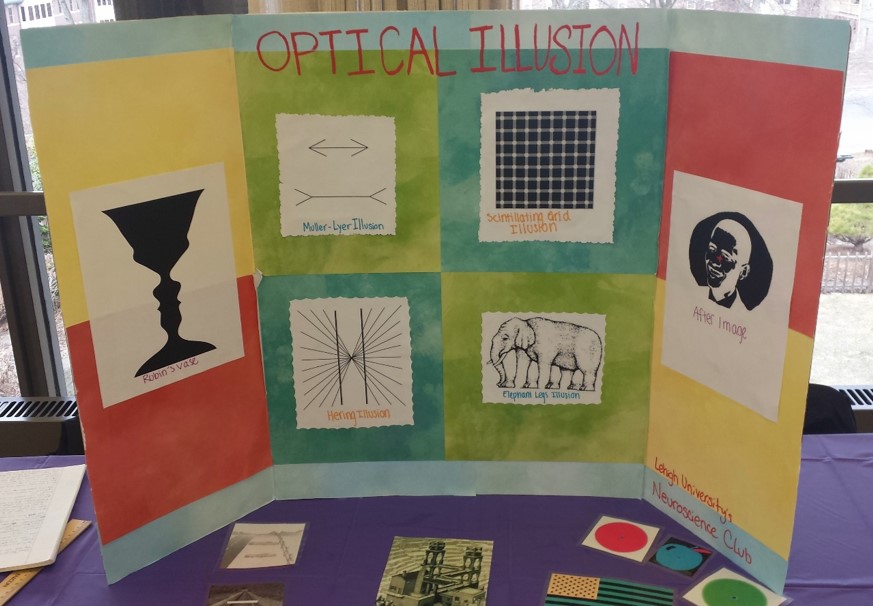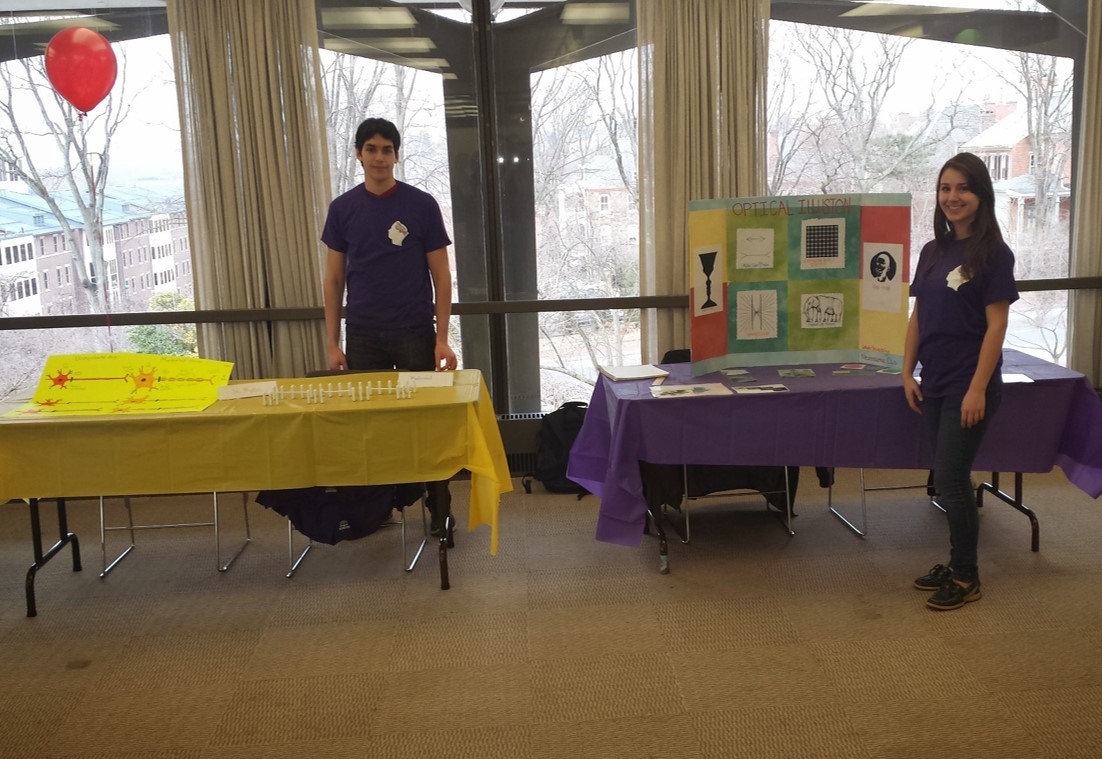The Swann lab studies how hormones induce changes in the brain and behavior. Specifically, we know gonadal steroids play a critical role in the regulation of male mating behavior. When these steroids are removed via castration, male-typical sex behavior is eliminated. Copulatory behavior returns when testosterone is systemically restored. Testosterone binds to receptors found throughout the brain including the medial preoptic area (MPOA), a critical site for the regulation of male mating behavior in a variety of species, including the Syrian hamster (Mesocricetus auratus). In hamsters, the magnocellular medial preoptic nucleus (MPNmag), a sub-division of the MPOA, is the site that integrates steroids and pheromones. Exposure to female pheromones, which induces mating in males, stimulates neurons in the MPNmag but only in the presence of circulating testosterone. This may be the result of changes in communication between the neurons in the MPNmag: testosterone increases synapses in the area. Recent research has found evidence of testosterone enhanced synaptic size in neurons of the male MPNmag. The question remains; what are the mechanisms underlying steroid induced changes in the MPNmag of male hamsters?
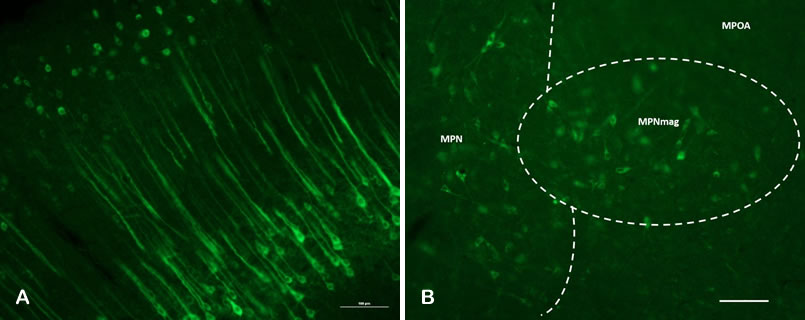
image A: TrkB fluorescent immunoreactivity in the hamster cortex.
image B: Fluorescent image of TrkB-immunoreactive neurons in the magnocellular medial preoptic nucleus (MPNmag). MPOA, medial preoptic area; MPN, Medial preoptic nucleus. Scale bar = 100μm.
My research focuses on the hormonal regulation of growth factors and their role in influencing sex behavior in the Syrian hamster. Brain Derived Neurotrophic Factor (BDNF), the growth factor of interest, stimulates the growth and differentiation of neurons, increases neuronal survival, and promotes plasticity in the central nervous system. BDNF is also known to be stimulated by hormones. BDNF exerts its function by binding to its receptor Tropomyosin-Receptor Kinase-B (TrkB) that is highly expressed in males. My current thesis is centered around the interactions between TrkB/BDNF and testosterone and their role in coordinating male copulation in the Syrian hamster.
Undergraduate Trainees at Lehigh University
Christa Frodella — 2012-2013*
Signe Hoover — 2012-2013
Danielle Sin — 2012-2013*
Steve Monobianco — 2012-2013*
Lashaka Jones — Summer 2013*
Nunana Gamedoagbao — Summer 2013, 2014*
Dean Granot — 2013-2015*
Clifford Zin — 2013-2015
LaDara Godbolt — Summer 2014
Cameron Feathers — 2014-2015
Cimrin Bhalla — 2015-present
Garrett Santini — 2015-present
Christine Lenchur — 2016-present
Julia Hayden — 2016-present
*Currently enrolled in Ph.D., M.S., or M.D. Program
Publications
Squire M. E., Brague J. C., Smith R.J., and Owen J.C. (2011) Evidence of Medullary Bone in Two Species of Thrushes. The Wilson Journal of Ornithology 123(4): 831-835.
Meeting Abstracts
Haas, J.S., Brague, J.C., Sevetson, J., Asymmetry of Electrical Synapses: Measurement and impact in small networks. Computational and Systems Neuroscience 2014.
Brague J.C. & Swann J.M., TrkB is Necessary for Male Sex Behavior in the Syrian Hamster. Society for Behavioral Neuroscience 2015.
Brague J.C. & Swann J.M., The role of TrkB and BDNF in Governing Steroid induced behaviors in the Syrian Hamster. Society for Behavioral Neuroendocrinology 2016.
Professional Presentations
Brague J.C., Smith R.J., and Squire M.E., Intra-species Comparison of Forelimb Bone Morphology in Passerine Landbirds: Differences in humeral length. Annual Student Scholar Celebrations, The University of Scranton, May 23rd 2007.
Brague J.C., Smith R.J., and Squire M.E., Intra-species Comparison of Forelimb Bone Morphology in Passerine Landbirds: Differences in cortical and trabecular bone. Annual Student Scholar Celebrations, The University of Scranton, April 21th 2008.
Brague J.C., Smith R.J., and Squire M.E., Intra-species Comparison of Forelimb Bone Morphology in Passerine Landbirds: Differences in trabecular microarchitecture. Annual Student Scholar Celebrations, The University of Scranton, May 27th 2009.
Jones C., Brague J.C., and Swann J.M., Trial and Error: An Educator’s Guide to
Problem-Based Learning. Undergraduate Research Symposium, Lehigh University, April 23rd 2013.
Brague J.C., Hoover, S., and Swann J.M., Testosterone Induced Enhancement in the
MPNmag. Graduate Candidate day, Lehigh University, January 14th 2014.
Granot D.Y., Zinn C.R., Brague J.C., and Swann J.M., Crossing lab boundaries: An
Easily Adaptable Method for Behavioral Analysis. Undergraduate Research Symposium, Lehigh University, April 2015
Brague J.C. and Swann J.M., TrkB is Necessary for Male Sex Behavior in the Syrian Hamster. Graduate Candidate day, Lehigh University, January 12th 2015.
Brague J.C. and Swann J.M., TrkB is Necessary for Male Sex Behavior in the Syrian Hamster. Lehigh-Nottingham Workshop, Lehigh University, May 21st 2015.
Brague J.C. and Swann J.M., TrkB and its role in steroid mediated changes in the
MPOA. Graduate Candidate day, Lehigh University, February 10th 2015.
Granot D.Y., Zinn C.R., Feathers C.T., Brague J.C., and Swann J.M., An Inexpensive,
Easy, and Efficient Quantification Method for Behavioral Analysis. Undergraduate Research Symposium, Lehigh University, April 2016
Brague J.C. and Swann J.M., The Role of TrkB and BDNF in Governing Steroid Mediated Copulatory behavior in the Syrian Hamster, Society of Behavioral Neuroendocrinology, Montreal Canada Aug 2016. (1st place poster award)
Graduate Studies
Lehigh University
Bethlehem, PA
PhD. Candidate
Integrative Biology: Neuroscience
Expected completion: August 2017
Courses:
Endocrinology of behavior, Advanced Endocrinology of Behavior, Advanced Neuroanatomy, Advanced Neurobiology of Sensory Systems, Advanced Synapses, Plasticity and Learning, Genes and the Brain, Special Topics: Pulsatility of Hormones, Research in Biological Sciences.
Undergraduate Studies
The University of Scranton
Scranton, PA
B.S. Biology and Neuroscience 2010
General Biology I, General Biology II, General Chemistry I, General Chemistry II, General Physics I, General Physics II, Organic Chemistry I, Organic Chemistry II, Microbiology, Skeletal Biology, Molecular Biology, Psychopharmacology, Behavioral Neuroscience, Cellular and Molecular Neurobiology, Functional Neuroanatomy, Undergraduate Research in Neuroscience, Statistics in Behavioral Science, Research Methods in Behavioral Science, and Neuroscience Research Methods.
Brague J.C. (2015) Standardizing the Quantification of Sexual Behavior in the Male Syrian Hamster. Forum Research Grant, Lehigh University
Brague, J.C. (2014) TrkB is Essential for Male Sex Behavior in the Syrian Hamster. Sigma Xi Grants-in-Aid of Research, Sigma Xi
Brague, J.C., Marsteller, R., Swann, J.M. (2015). Second Annual 2015 Bio Fair, College of Education – Lehigh University
Brague, J.C., (2014). Second Annual 2015 Bio Fair, Council for Equity and Community - Lehigh University
Brague, J.C., (2014). Second Annual 2015 Bio Fair, Graduate Student Life Grant – Lehigh University
Brague J.C., Farwell S.L., Fisher C., Gershman B., Swann J.M. (2013), First Annual Bio Fair, Core Competency Grant - Lehigh University
Society for Behavioral Neuroendocrinology First Place Poster Award, 2016.
Undergraduates, Graduates, and Post-docs are able to apply for the Poster award given each year at the annual meeting. Brague, J.C. and & Swann, J.M., 2016. “The Role of TrkB and BDNF in Governing Steroid Mediated Copulation in the Syrian Hamster.”
Graduate Student Merit Award, 2014-2015.
For establishing, maintaining and directing the Bio Fair as a graduate student run outreach program for the department of Biological Sciences. For serving as the graduate student representative on the Education Policy and Library and Technology Service committees. For serving as Historian on the Graduate Student Senate. –Alumni Association, Lehigh University
Graduate Life Leadership Award, 2013-2014.
For establishing an outreach program that promotes biology education for underprivileged middle school students. For serving as treasurer in the Biological Organization of Graduate Students (BOGS) and being the most active graduate club on campus. –Graduate Student Senate, Lehigh University
Graduate Student Club of the Year award, BOGS 2013-2014.
For being the most active graduate club on campus. Some highlights include hosting a tour of the biology program for state representative Charlie Dent, running a “lets read Math” volunteering event, organizing the biology section of books for AAUW’s book fair, and finally creating, organizing, and implementing the first annual Bio Fair in collaboration with Broughal Middle School. – Graduate Student Senate, Lehigh University
BIOS 279 — Experimental Molecular Neuroscience Laboratory
Inquiry-based lab course emphasizing molecular and cellular neuroscience approaches to understanding the nervous system. Opportunity ofr making real research discoveries on the genetic and cellular underpinnings of brain function. Molecular genetic, bioinformatic, and neurochemical techniques. I am responsible for directing the bioinformatics section throughout the semester.
- January 2017 - present
BIOS 130/MATH 130 — Biostatistics
Elements of statistics and probability theory with emphasis on biological applications. The purpose of this recitation is to provide statistical analysis of experimental and observational data. I am responsible for teaching two student secitons (n-15) and designing 10 lectures. Each lecture was designed to incorporate class statistics with real data sets.
- January-May 2016
BIOS 120 & 122 — Integrative Biology and Neuroscience lab
The lab is completely integrative, including topics such as evolution, genetics and heritability, neuroanatomy, neurophysiology, renal physiology, and behavior. Responsible for teaching two 15-18 student sections and designing 11 lectures. The fall 2015 and 2016 semesters I was responsible for designing the syllabus, teaching other graduate students the lecture material of the course, grading policies, and coordinating the labs. I designed a neurophysiology lecture/lab titled “Rate Coding” and successfully tested and integrated this into the core lab series. Pictures can be seen on twitter using the hashtags #lubios120jb and #libios122jb
- Jan 2014 – May 2014
- Aug 2014 – Dec 2014
- Jan 2015 – May 2015
- Aug 2015 – Dec 2016
BIOS 277 — Experimental Neuroscience lab
The purpose of this lab is to give students the opportunity to experience various neuroscience lab techniques. During the spring 2013 semester the professor and I designed a problem-based learning class centered on the question “Can hamsters learn?” We guided the students through literature searches, techniques in behavior and immunohistochemistry, data collection and analysis, and writing a final report.
- Aug 2013 – Dec 2013
BIOS 278 — Neurophysiology Laboratory
The functional electrical underpinnings of the nervous system explored through direct recordings and thorough data analyses. Experimental design, hypothesis testing, numerical analysis, reading and writing of primary science. I was responsible for lecturing the following topics: the basics of writing code, modeling an action potential, and rate coding. I was also responsible for setting up all electrophysiological rigs, making solutions, and animal husbandry. This lab taught the students how to perform extracellular recordings, record and analyze the data, and
present the findings.
- Jan 2013 – May 2013
BIOS 115 — Genetics
The purpose of this recitation is to provide general and applied knowledge about genetics. I was responsible for designing 12 lectures and teaching two sections of 30 students. Each lecture was designed to recap the class material, provide “real-world” applications for each topic, and give practice quizzes. I held extra office hours, open to all students in the course, and gave a practice test before each exam.
- Aug 2012 – Dec 2012
NEUR 330L — Neuroscience Research Methods Lab
A lab designed to teach undergraduates neurophysiological techniques. The students learned about extracellular and intracellular recording, data collection and analysis, and writing a final report. I was responsible for setting up all electrophysiological rigs and animal care.
- Aug 2009- Dec 2009, Department of Biology, The University of Scranton
Community Service
- Graduate Student Senate- President, April 2015 - April 2016
- Lehigh University’s Bio Fair- Director/Founder - 2014, 2015, 2016
- Graduate Research and Development (GRaD) Experience - Direcgtor/Founder, 2016
- Graduate Student Senate- Historian - Apr 2014 – Apr 2015
- Biological Organization of Graduate students - Treasurer, Aug 2013 - Aug 2014
- Council of Student Presidents - April 2015 - April 2016
- Education Policy Committee-Lehigh University - Oct 2014 – Aug 2015
- Fairchild Library Committee-Lehigh University - Nov 2014 – Aug 2015
- Middle States working group (general education) - Graduate representative, August 2016 - present
- Lehigh Valley Society for Neuroscience- Lehigh Liaison, Jan 2014 - Jan 2017
- Lehigh Valley Society for Neuroscience - Treasurer, Jan 2017 - Present
- Lehigh University’s Neuroscience club - Graduate Advisor, Jan 2014 - Present
Academic Outreach
BioFair
Incepted in 2013, the Bio Fair is a hands-on educational outreach program for middle school children. I founded this program in 2013 and have organized and directed the fair for the past two years. Fully run by graduate students in the department of Biological Sciences, this fair reinforces and extends the current middle school science curriculum. Various labs from Lehigh University’s Biology department are invited to create a station that represents their lab topic. These presenter’s then develop a ten minute hands-on activity to explain their research topic. These activity-based approaches help make difficult science concepts easier to understand e.g., how brain cells transmit signals, how traits are passed on from parents to children, and the importance of diet and exercise on the heart. These activities also encourage students to challenge themselves by communicating with each other, asking questions, and formulating their own ideas. As scientists, we are intrigued by the world’s fascinating complexity. We try to convey our enthusiasm and curiosity to these middle school students in the hope of inspiring them to appreciate and question these mysteries as well.
This fair is also designed to promote the professional development of graduate students. As a scientist, it is often hard to explain your research to a lay-person (someone not in science) and even harder to explain it to a 7th grader. Being able to explain your research to this population is a learned skill that must be constantly refined and it requires graduate students to look at the big picture. Furthermore, granting agencies (NIH, NSF, etc.) require researchers to disseminate their research to the public and the Bio Fair is the perfect opportunity for labs to satisfy this requirement. This fair is a huge success and rewarding for all students involved. Furthermore, this fair has strengthened the partnership between Lehigh University and Broughal Middle School. Two successful bio fairs (March 2014 and March 2015) are complete and we are gearing up for the third in March 2016!
Other academic outreach
- Graduate Research and Development (GRaD) experience, Founder and Director, May 21, 2016
- Dieruff High School's 1st Annual Family Science Night! "The Dancing Cockroach: How Neurons work!" Demonstration, March 2, 2016
- Moon Mouse: A Space Odyssey by Lightwire Theatre; After-show activity: "Listen to your neurons and take over mine: Human-to-Human interfaces;" interactive hands-on demonstration - Lehigh University, February 13, 2016
- STAR academy summer camp (high school); "The Roach Revolution: Frontiers in Neuroscience and Neural Interfaces" Lectures: July 13, 20, and 27, 2015
- Hempstead Hill Academy (middle school) "Tour de Sheep Brain: A neuroanatomical approach" Lecture, April 2, 2015
- Hempstead Baltimore Maryland (middle school); “Tour de Sheep Brain: A Neuroanatomical approach” Lecture, April 3rd 2015
- Marvine elementary school (5th grade) “Tour de Sheep Brain: A Neuroanatomical approach” Lecture, April 30th 2015
- Lehigh University's Bio Fair at Broughal MIddle School; Hands-on scientific demonstrations, March 2014, 2015, 2016
- Students That Are Ready (STAR) academy summer camp (high school); "Tour de Sheep Brain: A neuroanatomical approach" Lecture, July 9, 2014
- Brooklyn-based Kingsbridge Community Center (High School); “Tour de Sheep Brain: A neuroanatomical approach” Lecture, Aug 5th 2014
- Mastery Charter School (High School); “Tour de Sheep Brain: A neuroanatomical approach” Lecture, Oct 3rd 2014
Guest Lectures
- Summer Scholars Institute (30 Lehigh Freshman); “Poliomyelitis: A close up view of the polio virus, Neurons, and Paralysis” Aug 29th 2014
- Lehigh Valley Science and Engineering Fair (350 middle and high school students from the Lehigh valley area) “The Roach Revolution: Frontiers in Neuroscience and Neural Interfaces” March 14th 2015; "From Neuron to Machine; Advances in Neuro-Prosthetics" March 12, 2016
- Neuroendocrinology course (Lehigh University), "Behavioral effects of hormone manipulation on sex behavior" Fall 2013
- Synapses and Plasticity course (Lehigh University), "Electrical synapses" Spring 2014
- Neuro Research Methods course (Moravian College), "Immunohistochemistry" November 2, 2016


